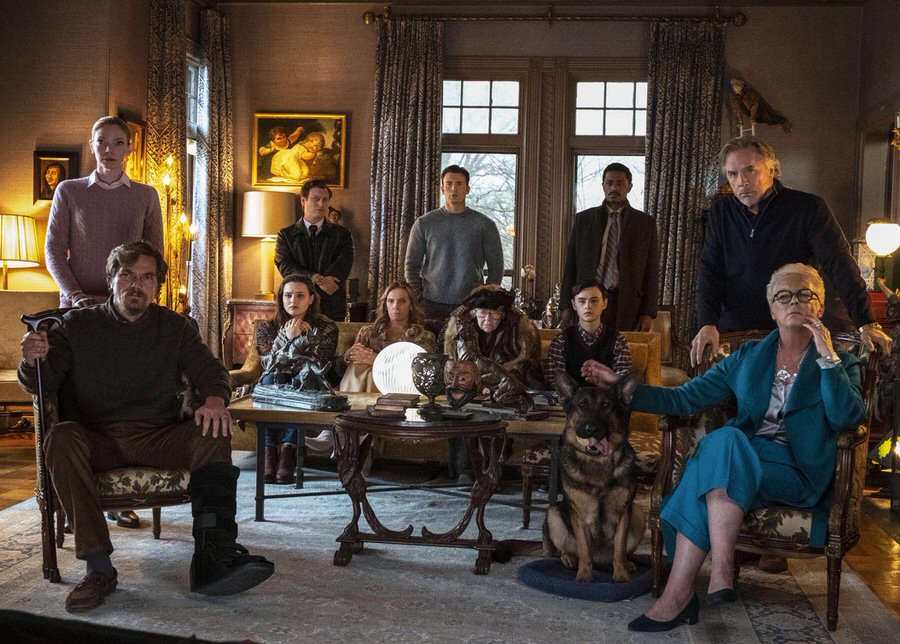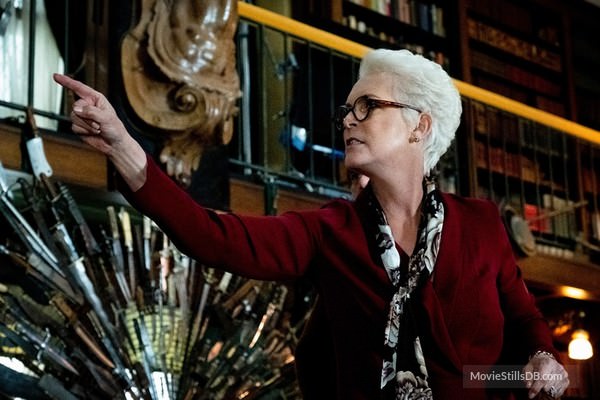Knives Out
Rian Johnson’s Knives Out begins, and ends, with a coffee mug which states, “My House, My Rules, My Coffee”. Attention to small details has always been a Johnson hallmark and his least successful film, 2017’s Star Wars: The Last Jedi, was one in which small gestures and subtle acts had little room to exist; in the noisy chaos of space opera (of the Disney kind, at least), grandness is all. In this very entertaining murder mystery, though, filming real people interacting in real space is the movie’s architecture, making this witty concoction refreshing to watch. It’s up to date and smart.

Daniel Craig plays the wry, southern Benoit Blanc, called upon by a mysterious, unknown client to assist investigating the death of mystery author and multimillionaire publisher Harlan Thrombey (Christopher Plummer). Thrombey appears to have killed himself the evening of his 85th birthday party at his elaborately decorated manor. Invited to the party were more murder suspects than a Clue board: his hard-edged daughter, Linda (Jamie Lee Curtis), her husband, Richard (Don Johnson) and their profligate son, Hugh Ransom (Chris Evans); Walt (Michael Shannon), the publisher of Thrombey’s books, with wife and online-trolling son in tow; Joni (Toni Collette), Thrombey’s step-daughter, who also brought her college-age daughter; also Fran (Edi Patterson), Thrombey’s house-keeper and Marta (Ana de Armas), Thrombey’s nurse, caretaker and confidante. Thrombey, moreover, cut ties with his three closest relatives the night of the party, all of who have relied, sponge-like, on his financial assistance, giving many of the party-goers acute motives for murder.
Johnson’s first feature film, Brick (2005) was a clever experiment, transporting a Dashiell Hammett/Raymond Chandler-like plot to a California suburban high school, with hyper stylized dialogue to match. Watching new characters in a new scenario act out classic film noir tropes made viewers see noir relationships and moral quandaries in a new way. The small, intimate setting (and low budget) helped the story; more money and elaborate sets would have only gotten in the way. Johnson came up with the idea for Knives Out after making Brick, but it took fourteen years to be made. In the meantime, among other feature films, Johnson directed some of the best episodes of Vince Gilligan’s Breaking Bad.  The episode “Fly”, in particular, was a model of low-budget film making. Taking place in one room, and featuring only two actors, the episode builds to moments of almost unbearable suspense.
The episode “Fly”, in particular, was a model of low-budget film making. Taking place in one room, and featuring only two actors, the episode builds to moments of almost unbearable suspense.
Knives Out, likewise, benefits from a relatively low film budget. The dialogue is sharp and funny, the actors clearly having a ball playing exaggeratedly greedy monsters. Toni Collette’s Joni is a spacy, new age, Gwyneth Paltrow type, while Don Johnson spouts insensitive and patronizing political rhetoric (Rian Johnson pokes at both sides of the spectrum). Michael Shannon often plays quiet achievers who have the capability of bursting out of control. His Walt is more beaten down, but still capable of menace when cornered.
Knives Out has a few small missteps: a moment or two in musical score and script when the film starts to falter into sentimentality—but for the most part retains a fast-moving, even keel. No spoilers here, but Knives Out subverts the structure of the murder mystery template in unexpected ways, but still circles around to satisfying the film’s whodunit requirements and expectations.
It’s also satisfying to see the film’s financial success in a world of skull-crushing action films ($283.4 million at the box office—so far). A sequel starring Daniel Craig as Benoit Blanc is already under discussion.
—Michael R. Neno, 2020 Jan 27